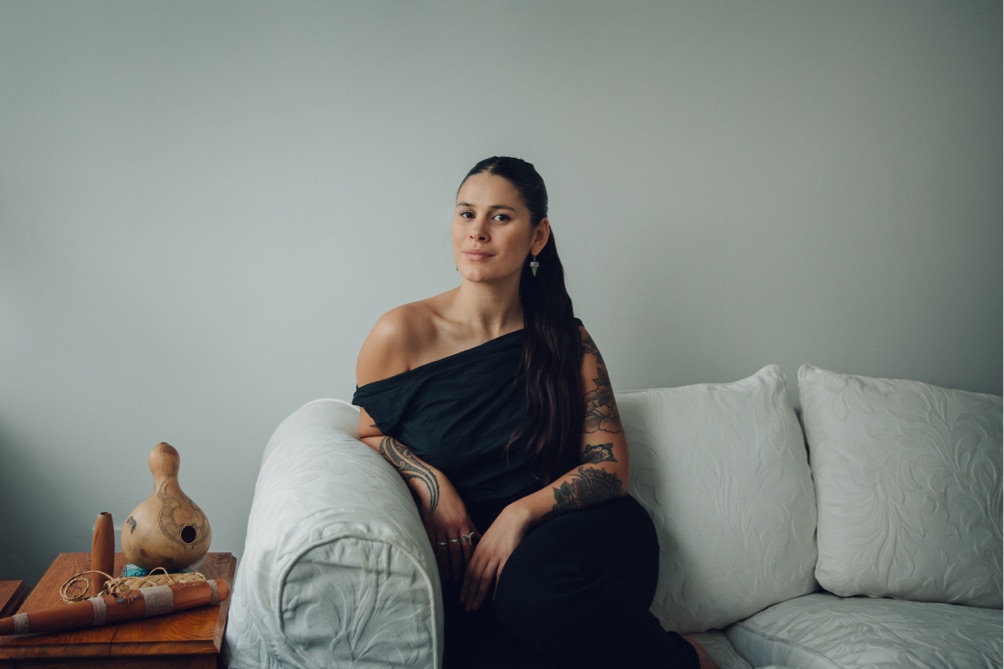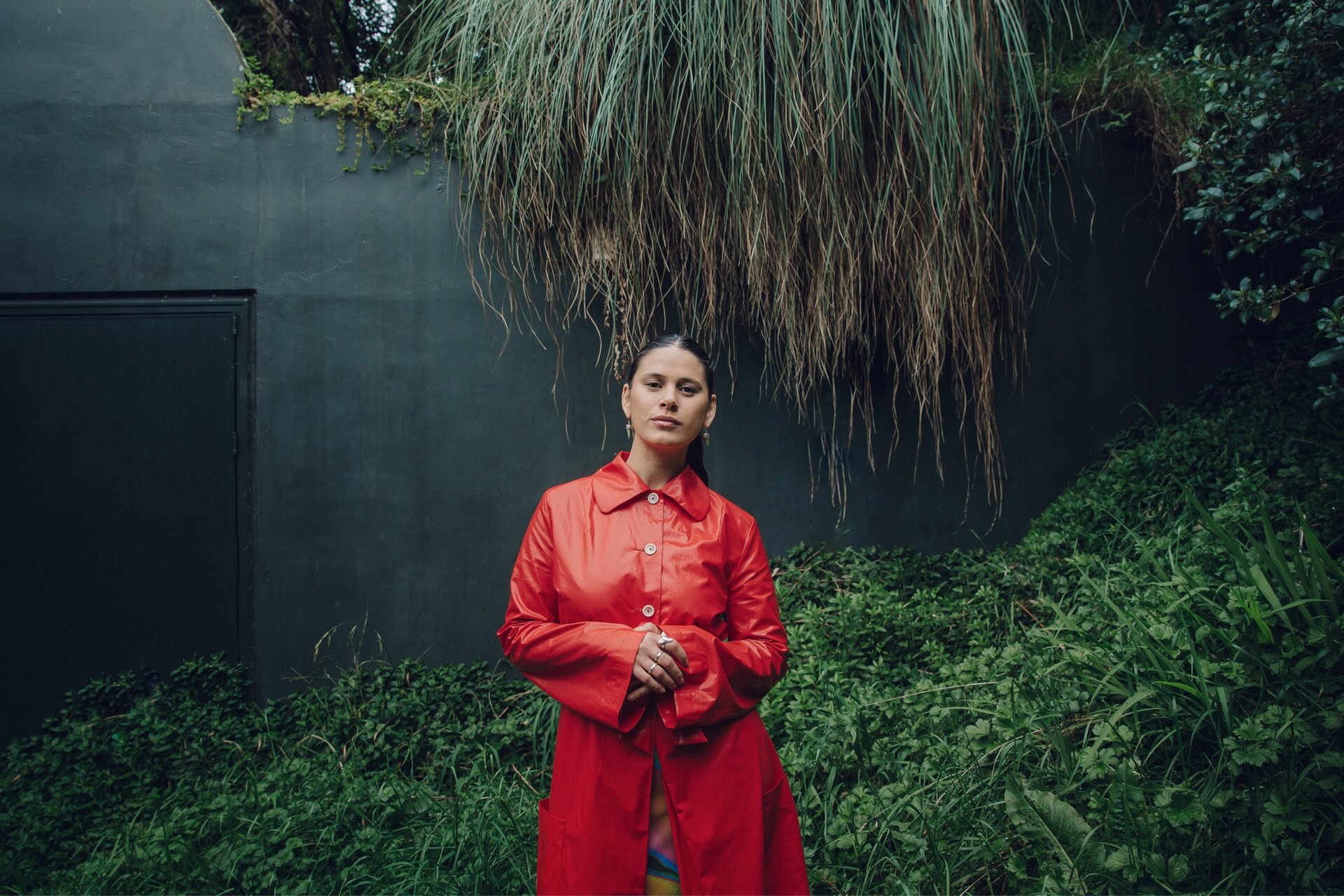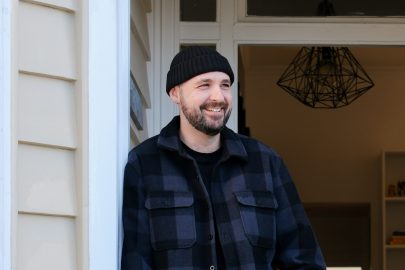Jul 31, 2023 People
When I started in journalism, I never made an outright commitment that I would dedicate myself to normalising reo rangatira on the airwaves. Te reo is not my first language and I’m still not matatau (fluent). And so many Māori, working at RNZ and other broadcasters, have done a huge amount of work already.
My reo journey started at age 10 when I was sent from Pōneke Wellington, and my insular yet large whānau unit there, to the other end of the North Island. Watching history repeating itself, my parents had earlier pulled me out of a small Catholic school that refused to teach te reo. Instead, Mum sent me to a public school where a love for the language was fostered by the incredible Ms Tūhoro. The fire was stoked. Not long after, an aunty from Kaikohe arrived with a tono (request): I should go home to the north and go full immersion. She was one of many of our karani ma’s and pa’s (elders) who had dedicated their lives to ensuring their mokopuna had the reo.
So there I was — a reluctant kid leaving my urban shelter and bound for Te Tai Tokerau Northland, where I would go to kura kaupapa on the whenua I whakapapa to. I’m sure it was a hard decision for my parents. I was the whānau baby. My mum’s sister, brother and my many cousins all lived on the same Newlands street. I was a spoiled little shit. I didn’t start talking until I was four, probably because I didn’t have to — I was waited on hand and foot by my sister and cousins.
I’m hesitant to say I was lucky. We shouldn’t need luck to have our own language. But I was. Not because I had easy access to the language, but because a wide whānau effort made sacrifices to ensure access for me. While Mum drove me up the long expanse of the Great Fish, tears streamed down her face. Now that I’m a mother myself, I know exactly where those tears were welling from. She didn’t want to let her baby go — the one who had been her shadow ever since she was born — but Mum also knew this was bigger than her and bigger than me.
I arrived at Heke St, Kaikohe, decked out in Pumpkin Patch and Glassons hand-me-downs from my city cousins. But I also arrived to open arms — and possibly some sniggers — from my northern whānau. Mission was on.
For the unfamiliar, kura kaupapa are total immersion schools that teach exclusively in te reo Māori. The first kura opened at West Auckland’s Hoani Waititi Marae in 1985 at the initiative of local whānau. In a pattern that would repeat itself over the ensuing decades, the government was slow to respond with resources and finance, taking four years before legislating kura into official existence via the Education Act 1989.
In a clear example of this pattern of persistent struggle, an urgent claim is currently before the Waitangi Tribunal. Brought by the kura kaupapa governing body, Te Rūnanga Nui o Ngā Kura Kaupapa Māori, it argues that 38 years of Crown actions have marginalised — and continue to marginalise — Māori in the education system. The first round of tribunal hearings were, fittingly, held at Hoani Waititi Marae in May.
In Kaikohe, more than 20 years ago, I found myself sitting in one of those classrooms being spoken to but not with. It was a long time before I had the confidence to utter a response. My aunties had translations stickered on every single item in the house. We had nightly classes. I had extra classes at kura with Matua Kawhena, who remains my favourite reo teacher to this day. Everyone was invested in making sure I reclaimed what had been stripped and stolen from our parents and grandparents.
I am not here to remind you of the harms of colonisation and the continued trauma many Māori undergo at the hands of the Crown. I am not a reo revitaliser — just a product of a wave of activism and advocacy that many before me dedicated their lives to and continue to uphold. I am the next generation of that struggle, and the story of my own family’s fight and reclamation is part of a much bigger picture, a mosaic made up of every Māori family’s reclamation story. Even if it’s a sacrifice we shouldn’t have had to make. To regain what should never have been taken from us in the first place.
This is a mihi to them, and most importantly, to the bravery of my mum who, when many told her it was a waste of time to send me, did it anyway. Kore e mimiti ngā mihi aroha māu, Māmā.

I started as an intern at RNZ in 2011. I didn’t listen to the station growing up, nor did I understand the role of public broadcasting when I started. One of my first assignments was to do a lovely colour story from an island in the Hauraki Gulf, Te Motu-a-Ihenga Motuihe Island, where mana whenua and the Department of Conservation were releasing tuatara.
A dream assignment for a baby journo — what we call a ‘package on a plate’. I remember it vividly. The nerves, the fear of being caught out as an absolute novice, being looked after by comms staff who could probably tell I was shitting myself. As the karanga and waerea rang out from mana whenua, we watched the tuatara welcomed to their new home. An ancient taonga was being brought back to life by the descendants of those who once frequented the island.
It was a Sunday and I went straight from the ferry to the office, anxious about having to whittle a mountain of audio into a three-minute package to play on Morning Report. The night reporter picked up on my petrified look as I stared blankly at a screen which had no words except “Māni Dunlop was there …” and guided me extensively.
In that moment, I was doubting my life choices. Here I was, on a Sunday night, struggling to put together a fluff story. I was sweating while my script was being edited by a seasoned producer. I kept sweating in the recording booth as I went over and over every line. My internal dialogue was racing at a million miles an hour. Did I sound too young? Did I put the emphasis in the right place? No, I’ll go back. Hewitt Humphrey will cringe at that, surely? Oh my god, my grandad [rest his proud soul] will be listening — I wonder when I should tell him to listen? Fuuuck!
I needed a break out back to calm the nerves. Port Royal rollies. As I returned upstairs to mix the audio, I was now anxious about what time the story would play in the three-hour programme, if the presenter would be able to pronounce the island’s name properly, or if the story would even play at all. My worries continued as I listened to it live the next morning.
When I arrived in the office after it went to air, my boss praised me for my efforts but took me aside. “So, we’ve had an internal complaint about your sign-off.” I was perplexed, racking my brain over what the sign-off was. I had said “Tāmaki Makaurau”, not Auckland. It had never been done before. Naively, I hadn’t thought it would be an issue.
It was.
I logged in and found a stern note from the news editor enquiring about my use of the name of our biggest city. I didn’t know what to reply, and I can’t find now what I did reply with. I received it as a warning, and was told not to do it again without approval.
Newsrooms are funny places. I can only speak for the ones I have been in, but the hierarchy is palpable. The old guard is strong and presents itself with a power dynamic that as a young intern you did not question. Things have fortunately changed to a large extent. Juniors have more of a voice and push back when necessary — a sign of the generational shift.
The week before this happened, there was a story about The Hobbit movies. A journalist signed off with “in the middle of Middle-earth”. A fictional place was acceptable but an original name of a place was not. The irony stung.
Soon, I left to go overseas and when I returned, things had changed drastically. This is credit to those who arrived after I had left, including Carol Hirschfeld, Mihingarangi Forbes and Shannon Haunui-Thompson. These days, when you tune in to 101 FM, you don’t have to listen long to hear a greeting, intro or audio cuts completely in te reo Māori, although there is still a long way to go to get to a position where there are more Māori voices at the editorial level.
But to champion our reo is half the fight. There are many journalists and broadcasters who champion our reo rangatira across many organisations. And they are all subject to regular abuse and vitriol. When these broadcasters have shared some of these comments, it is just a tiny snapshot of what is received day in and day out. A lot of the time, the comments are shared only when a certain boiling point is reached. It piles up day after day; a simple ‘kia ora’ provokes the harshest of texts. It’s exhausting that, after all these years, we are still subject to extensive racist pushback for using our indigenous language. Criticism of reo is often just a vehicle for a deep fear at this country’s progress.
Because, like it or not, reo is on the rise. Not only on the airwaves, but on the screens and in the neverending waitlists for reo classes. The implementation in organisations, both public and private; the efforts of Te Taura Whiri and Te Mātāwai for regionally led revitalisation of reo in different takiwā (regions); its appearance on road signs, menus and websites.
The abuse and pushback endure — sometimes even from the institutions we work for — but it’s often only a small proportion, and the direct antithesis of what actually is happening with our language. That’s a start. But I won’t cop out by saying ‘we still have a long way to go’ to sum up the trajectory of te reo.
Many whānau who want their kids to have their reo still have to fight for it. It can be literally at an extra cost (as was heard at the Waitangi Tribunal hearings last month) and sacrifice to make that happen. In our family, we would often sit in traffic for up to three hours a day to get one daughter to kōhanga, and now the same goes for kura. Each Sunday, the whānau chat is delicately planning the logistics for the week ahead, allocating pick-ups and drop-offs around mahi, hui, travel and other commitments so all the kids in our whānau have access not only to their language, but also to ngā kōrero tuku iho and mātauranga Māori, and are instilled with the confidence to be unapologetically Māori. This would not be the case if we sent them down the road to the local school. It would be easier, sure, but would that be right or fly in the face of those who have relentlessly paved a path for us?
… In Te Whanganui a Tara, under the watchful eye of Tarikākā, I’m Māni Dunlop.
This story was published in Metro N°439.
Available here.







